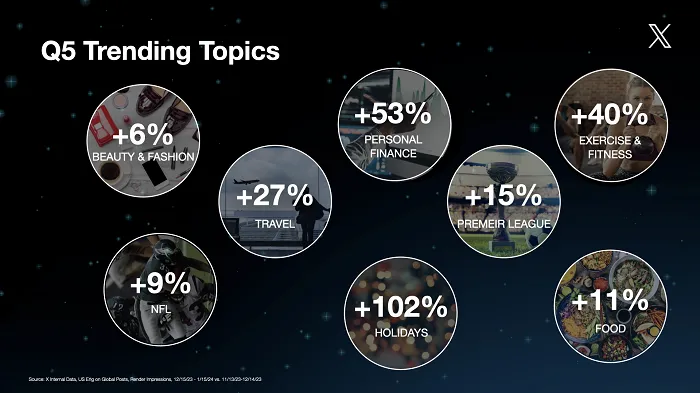
End-to-end encryption is a critical feature in keeping your email communications secure. It ensures that only the sender and the intended recipient can access the data within the message, preventing anyone else from intercepting or reading it.
In this blog post, we will explore why end-to-end encryption is vital for email communications and how it can help protect you from data breaches and other security threats.
What Is End-To-End Encryption?
End-to-end encryption is a data transmission method that only the sender and recipient of an email can view its contents. This type of encryption ensures that all data sent through email is secure, as third parties or the service provider cannot access it.
End-to-end encryption is also known as perfect forward secrecy because the encryption keys used for each message are unique and not shared with any other parties. The security of end-to-end encryption is based on the fact that only the sender and receiver of the email can access the content, meaning that no one else can intercept or read the message.
This makes it virtually impossible for hackers or malicious actors to access the data, as it is encrypted before it is even sent over the internet. Furthermore, since the encryption keys used for each message are unique, no one else can decrypt the message without the corresponding key.
End-to-end encryption is an essential feature of any email service, as it helps to ensure that the content of emails remains private and secure. By using this type of encryption, users can have peace of mind that their data is protected from unauthorized access, which can help to reduce the risk of data breaches.
How Does End-To-End Encryption Work?
End-to-end encryption is an important security measure for emails, protecting data sent through the internet. It works by encrypting the message when it is sent and then decrypting it once the intended recipient has received it.
End-to-end encryption is a type of encryption that prevents anyone other than the sender and receiver from accessing the content of a message. It uses two different keys, public and private keys. Only the sender and receiver can read the message, as the contents cannot be decoded without the encryption key.
A public key encrypts messages, while a private key decrypts them. Both keys are unique to each user and are stored on each device. When someone sends an email, their device uses the recipient’s public key to encrypt the message before sending it.
When the recipient receives the message, their device uses their private key to decrypt it. This prevents any third parties from intercepting and reading the contents of the message, as they don’t have access to the private key.
End-to-end encryption is an important security measure for emails, preventing unauthorized access to sensitive information. It also helps ensure that emails can be trusted, as only the intended recipient can read them. Using end-to-end encryption, users can rest assured that their messages are secure and private.
The Benefits Of End-To-End Encryption
End-to-end encryption (E2EE) is a form of digital communication that scrambles messages as they travel between the sender and recipient. This type of encryption is essential in protecting emails from third-party interception, ensuring that your confidential data remains secure.
The primary benefit of E2EE is that only the sender and receiver can see the message’s contents. This prevents the unauthorized viewing of sensitive data, such as personal information or financial details. This means that if someone were to intercept the message during transit, it would appear to be unintelligible gibberish.
In addition, E2EE helps to protect against malicious actors tampering with email content. If a hacker manages to gain access to an email account, they will not be able to modify any messages without being detected. As a result, users can trust that the emails they send and receive are authentic and not tampered with.
Finally, E2EE provides an extra layer of security for users who are sending emails over public networks. For example, if you use a public Wi-Fi connection to send an email, E2EE will prevent anyone on the same network from accessing your data. This is particularly important when sending confidential business documents or sensitive personal information.
By implementing end-to-end encryption in your email, you can ensure that all your communications remain secure and private. E2EE can provide peace of mind when sending emails and help to protect your sensitive data from malicious actors.
The Risks Of Not Using End-To-End Encryption
In an era of increasing cyber-attacks, protecting your emails from malicious third parties is more important than ever. End-to-end encryption provides a secure layer of protection that ensures that only the intended recipient can read and view the content of your email.
Without end-to-end encryption, your emails are vulnerable to attackers who can access and read your messages. Not using end-to-end encryption could lead to a variety of risks, including:
• Theft Of Confidential Information – Without end-to-end encryption, anyone with access to your email can view your confidential information, such as passwords and credit card numbers.
• Leaked Conversations – Your private conversations could be leaked to the public if they are not protected by end-to-end encryption. This could lead to a loss of trust and potentially embarrassing situations.
• Malicious Software – Malicious software can be embedded in emails and sent to unsuspecting victims. With end-to-end encryption, this type of attack would be rendered ineffective.
• Spam And Phishing Attempts – End-to-end encryption prevents spam and phishing attempts by making it harder for attackers to access your email account.
Using end-to-end encryption for your emails, you can rest assured that your conversations are secure and protected from malicious third parties.
Make sure to research and choose an email service that provides reliable end-to-end encryption to protect your data.
Conclusion
In conclusion, end-to-end encryption is an essential tool for ensuring the privacy and security of your emails. End-to-end encryption ensures that only you and the intended recipient can view the contents of your emails.
With this encryption, no one else can access your emails, even if they manage to gain access to your email account. This means that no one can track what you say, read what you wrote, or view your attachments without your knowledge.
O-Mail is the latest and excellent free email marketing tool to protect your personal information and ensure that only the people you choose can see it with a built-in end-to-end encryption feature.
Join the ONPASSIVE Ecosystem and register to get the benefits of the free webmail platform O-Mail.



























































![LinkedIn Provides Tips on How to Promote Live Events [Infographic] LinkedIn Provides Tips on How to Promote Live Events [Infographic]](https://imgproxy.divecdn.com/kA4YczoBIs8NmPBiERWa-OxzvYMz5kwjjZ6wewP8z7c/g:ce/rs:fit:770:435/Z3M6Ly9kaXZlc2l0ZS1zdG9yYWdlL2RpdmVpbWFnZS9saW5rZWRpbl9ldmVudF9hZHNfaW5mb18yLnBuZw==.webp)










